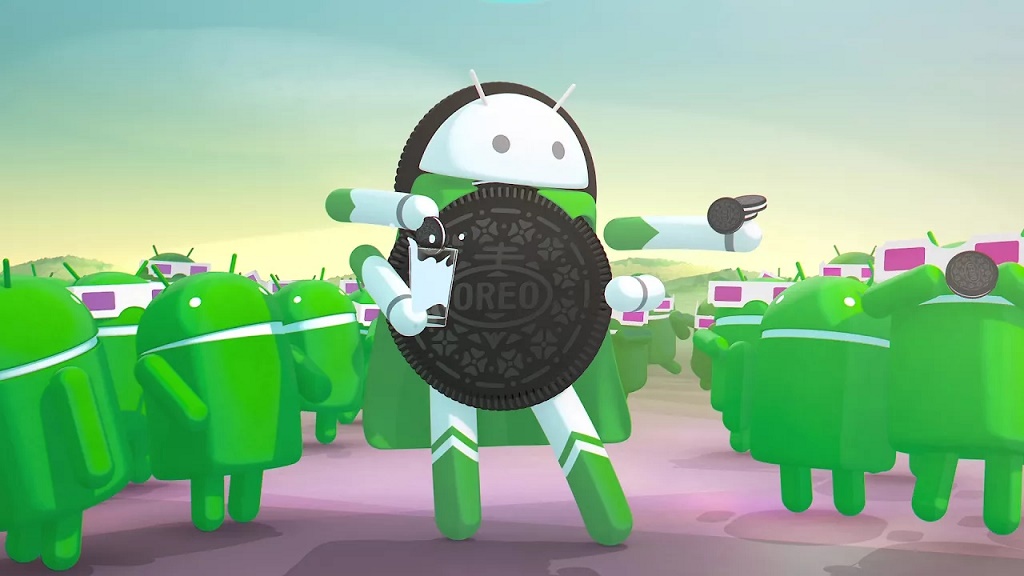Google has gradually refined its efforts such as the Android One initiative, optimising performance with each new version while introducing a new way to solve issues. Android is one of the most popular mobile operating systems in the world at the time of writing.
Android-Oreo-2018 380pxAndroid Oreo
It currently powers more than 2 billion devices on the planet. 2 billion, a figure that is almost a year old and we may see an updated figure during the upcoming annual developer’s conference by Google, Google I/O 2018. Considering such sheer number of devices across the range in terms of the price of smartphones catering to different budget preferences of the user, there are a number of issues that have plagued the platform.
Apart from the earliest of issues about fragmentation where all the Android user-base is spread thin, other issues of painfully slow updates, slow performance because of heavily skinned operating systems and downright sad user experience on cheaper budget devices have grown to be some of the most prominent problems for the operating system. Keeping this issues in mind, Google has gradually introduced and reintroduced efforts such as the Android One initiative, optimising performance with each successive Android version while introducing a new configuration that optimises the performance of the operating system to improve by leaps and bounds on cheaper smartphones with limited hardware.
[metaslider id=5466]
This has resulted in three different versions of Android in the year 2018. What is interesting is the fact that Google thinks that this is essential for the company to combat different set of problems with different approaches instead of trying to fix all the issues with a single version or configuration to rule them all. It announced the launch of one of its major effort last year during Google I/O 2017 with the announcement of Android Oreo (Go Edition) or simply, Android Go. The second effort is Android One, an initiative that has been around for a while but the second introduction of the program has changed it into a Google partner program and the third is the already existing Android Oreo 8.1.
To explain the differences between these three approaches, Android Oreo Go focuses on entry-level devices which are almost dirt cheap and usually the first smartphone for anyone moving from feature phones or the people who don’t want to spend much. What is different about this version is that it is not a separate fork of Android Oreo. Instead, it is normal Android with a number of built-in configurations to make it more streamlines and optimised to run on devices with 512 MB or 1 GB of RAM while using less space. Google has made separate ‘Go’ versions of all its popular apps that use almost half the space that the full app uses while ensuring that it does not make the user suffer. This means that users can make do with the devices that have 8 GB of internal storage.
Android One, the much talked about program after it came under the spotlight after HMD Global announced that all its devices from Nokia 3 and up will be part of the ‘Android One’ program. It is a partner program where Google works closely with hardware makers, in this case, HMD Global, to push much faster monthly Android security patches and major Android version updates.
Google initially launched Android One program as a reference platform where almost all the first wave devices shared common hardware to easily roll out of security as well as system updates. This program was aimed at offering unmodified, stock-Android experience at cheaper price points in comparison to the high-end Nexus lineup at the time. Later the program evolved to include more powerful hardware with a focus on faster updates for stock Android experience regardless of the price.
Last but not the least, Android Oreo is the third and the most commonly used version of Android which refers to the regular, unmodified, stock Android without any configuration flags that Google launches every few months. This is the version that is sent to most device makers along with all the Pixel and Nexus line-up of devices.
Be sure to follow our MWC 2018 page, Twitter and Facebook channels for LIVE updates from the show floor.
Disclaimer: Tech2 was invited to MWC 2018 by Huawei, who was responsible for all expenses related to travel and accommodation.


